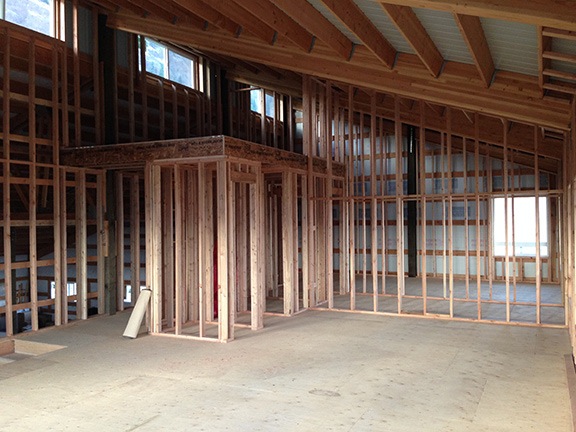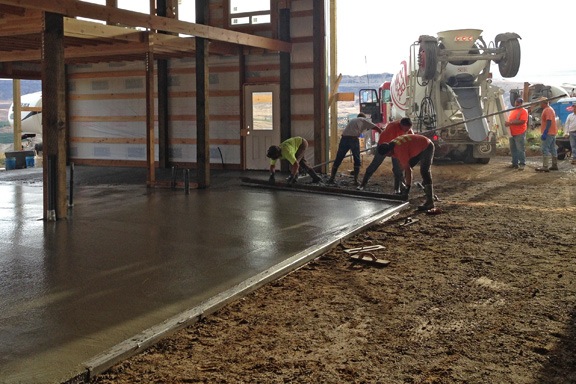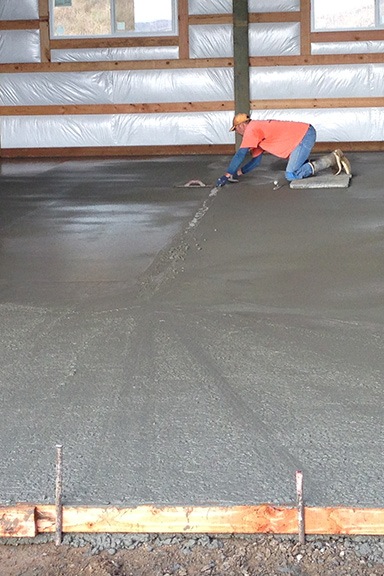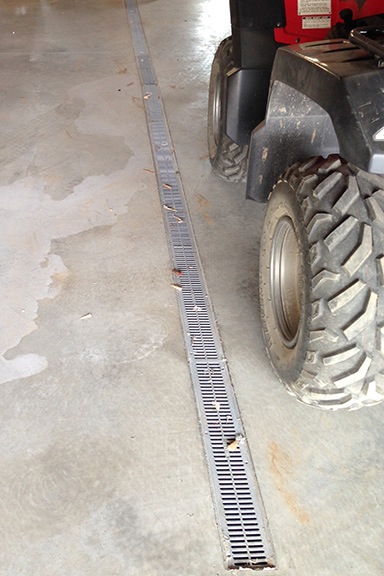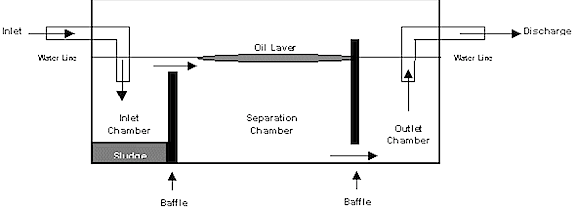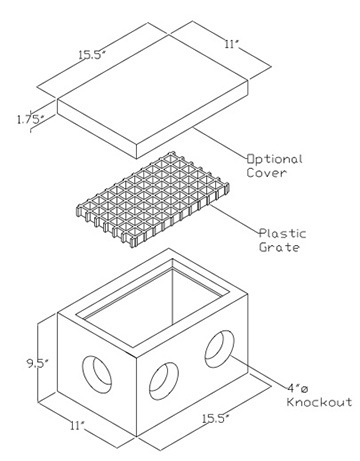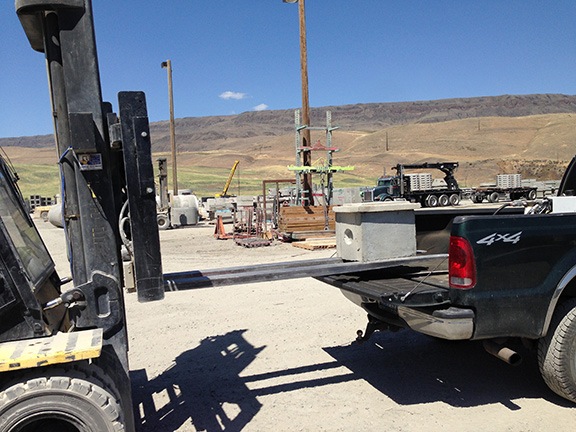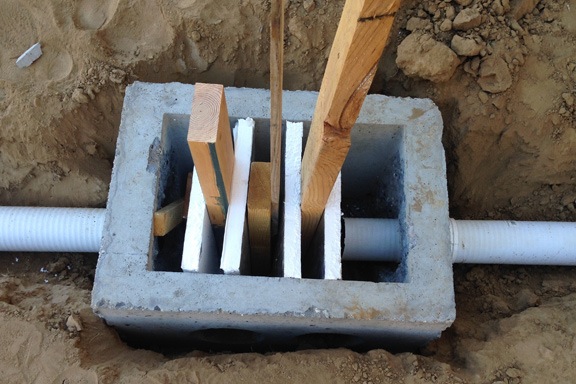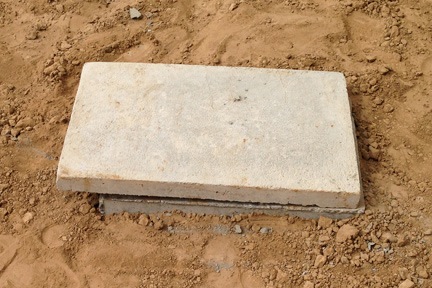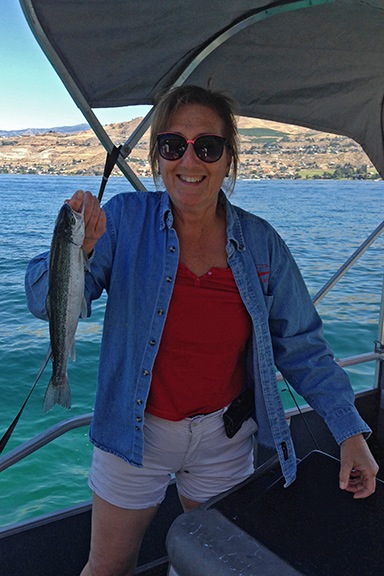The excavator guy comes in one more time.
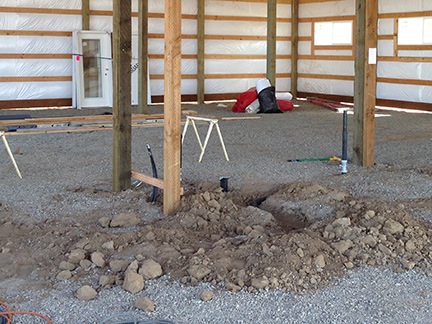
The plumbers hand-dug the trenches inside for the plumbing lines.
My building has a concrete slab. The cost of construction included plumbing “stub outs” — that means a plumber came and laid in pipe for my water and sewer lines before the slab was poured. Inside the building, I have a bunch of pipes sticking out of the ground under the stairs. In front of the building, I had the other end of those pipes, all ready to be connected to city water and my septic system.

Here’s what the interior stub outs looked like right after the concrete was poured. This space, which is now under the stairs, will eventually house a small bathroom with shop sink.
All of my utilities were already on the property and not far from the building site. The septic system line, which had been installed the previous summer, came within 10 feet of the front of the building. The water line, which had been installed by the original property owner came within 50 feet of the front of the building. The electric transformer, also installed by the original property owner, came within 60 feet of the building. A telephone line and fiber optic cable came out of the ground between the water and electric lines.
The Work
My task was to connect the utilities to the building. For that, I needed my earth-moving contractor, Jeff of Parkway Excavating, to come back and dig some trenches. I then had to lay conduit in the trenches — 3-in. schedule 40 for electric service and 1-in. schedule 40 for fiber optic lines — while Jeff laid 1-in. pipe for my water supply and sewer pipe for my septic system. At the same time, I wanted to run power, water, and the sewer line out to my shed, which was 80 feet from the building, so I could have a full RV hookup for future guests. That meant running 2-in. schedule 40 conduit, 1-1/2 in. water pipe, and more sewer line.

The Chelan County PUD very kindly provides this diagram to show the requirements for laying all kinds of conduit for underground utilities.
Although Jeff was allowed to do all the plumbing and sewer line connections, I had to lay all the electric and fiber conduit. This was required by local building codes: either the owner hires a licensed electrician do do all the electrical work or the owner does all the work herself. Because of my limited budget, I elected to do it all myself. That meant everything, including the laying of conduit.
There was also an element related to timing for the electricity connection. But I’ll cover that in a separate post.
Digging the Trenches
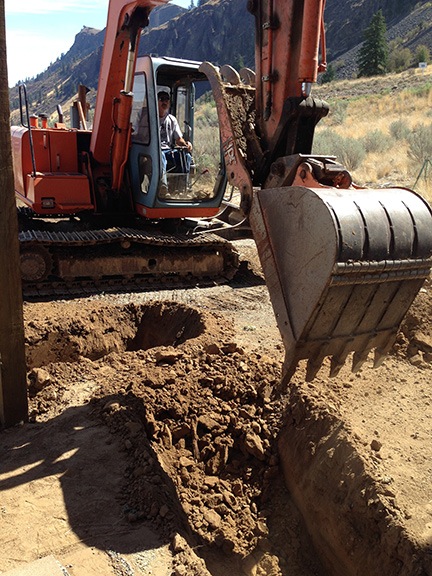
Jeff got right to work. In this shot, he’s begun the trench for the electric service.
I got back from my vacation on Saturday and did as much prep work as I could on Sunday. Although I expected Jeff bright and early on Monday morning, he was delayed. There had been heavy rain over the weekend and his equipment was partially buried in mud. He didn’t roll down the street with his backhoe until 11 AM. He got right to work.
Jeff had to dig three trenches. The first, for the electric, fiber, and telephone service, ran from the space between my front door and the RV garage door to as close to the electric transformer as he could get. The second, for the water and sewer lines, ran from the space to the right of my front door away from the building and then connected to the first trench. The third ran from a place near the transformer across my driveway to my shed. He dug this third trench last, after both he and I had moved our vehicles away from the building so we could still drive away.
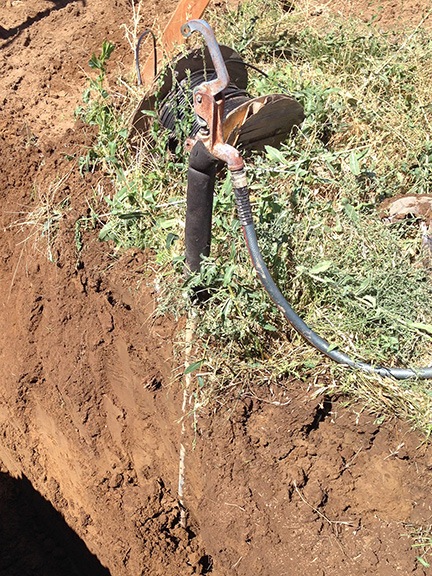
A frost-free value goes deep into the ground, far below the frost line. When it’s turned off, it drains the water in the pipe out so it doesn’t freeze. Rather than buy a new one for the shed, we moved the old one.
The plumbers had left enough 1-in. pipe from the building stub out to reach the main water line, which was 1-1/2 in. pipe. Whoever installed that pipe had left a bunch of it behind — enough to reach my shed. That would save some money; I wouldn’t have to buy any water pipe. Jeff dug around the frost-free valve and eventually turned off the water so he could pull the valve out. From that point on, I had no water.
(If I’d planned better, I would have topped off the water tank in the RV. But I didn’t. I had only 1/3 tank of water left. Since I didn’t know how long I’d be disconnected from the water supply, I showered that night at my neighbor’s house. Thank you Michelle and Aaron!)
Laying the Pipe and Conduit
Jeff was all business. (It’s such a pleasure working with someone who has done the job so many times before.) He stayed focused and worked quickly, laying the pipe and making the connections.

Here’s the 3-in conduit where it approaches my building. The copper wire is for grounding; unfortunately, it needed to be redone because it was 8 gauge wire and I was supposed to have 6 gauge. (Fortunately, I was able to salvage the correct wire from my temporary power pole the next day.)
Meanwhile, I laid conduit. It’s really not difficult to do. Each length has a wide end called a bell that fits over the narrow end of the piece it’s connected to. You brush some special glue inside the bell and outside the other end and slip them together. The glue sets in less than a minute. The only challenges were the bends, called sweeps, which had to be within certain specifications. For example, for the 3-in. conduit, the 90° sweeps needed to be 36 inches. Tight bends simply wouldn’t work for pulling heavy wire.
Jeff called it quits for the day around six. I was hot, tired, and covered with dirt. After a hot shower at my neighbor’s house, I just about passed out. I slept amazingly well.
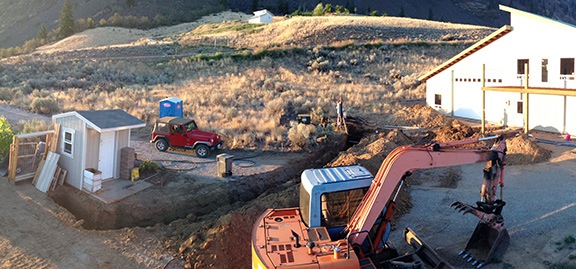
I shot this panoramic image from the top of my RV on Tuesday morning. What a mess!
Final Conduit and Plumbing Work
On Tuesday morning, Jeff was back to work. The Chelan County PUD guys showed up around 8:30. to turn off the power. This was necessary because I had to remove the temporary power pole I’d installed the previous year. The pole was in the way of the ground prep work Jeff needed to do for my concrete driveway apron; I needed the concrete to get as close to the transformer as possible. The PUD guys opened the transformer and disconnected the cables. I was now without water and power.
With the power to the pole turned off, Jeff wasted no time digging it out. With a weird sense of dread, I cut the fiber optic cables, thus disconnecting my Internet service. I helped Jeff attach a chain to the pole and he used his backhoe to pull it out of the ground and lay it on the ground out of the way. (Later, I’d salvage my 30 amp circuit breaker, RV outlet, and Internet connection components from the pole for reuse and put the remaining components on Craig’s List.) This made it possible for me to run the remaining 3-in. and 1-in. conduit for the power and fiber-optic cable.
Meanwhile, Jeff installed the frost-free valve at my shed — after I filled the hole with three loads of rock leftover from my septic system the year before — and finished the water line connections. He wanted to pressurize the system to make sure there were no leaks. So he went up to the road and turned the water on. I immediately heard water running and yelled up for him to shut it off. Turns out, neither of us had capped the open water line inside the building. Turning the water on had sent up a geyser of water under the stairs. (No harm done — the water hit the bottom of the stairs and came right back down; it dried quickly in this desert environment. Bonus: I got to test the slope of the concrete in my garage — it did indeed drain out the doors.) Jeff put together a makeshift plug and turned the water on again. The only leak was at the plug, which I’d have to replace as part of my plumbing work. He covered up the water and sewer pipes.
(Later, I’d connect the RV supply hose to the valve at the shed to restore my water supply. The first thing I did was drain the water from my tanks and fill it with fresh water.)

Here’s how Jeff connected my new RV spot sewer port to my existing septic system.
Around this time, Jeff also laid in the sewer lines that would connect a new sewer port to my septic system. He did this by digging a trench from the port behind my RV to a spot we’d agreed upon near the shed and putting a T in the line. Once I ran power to the shed and set up a 115v and 30 amp plugs, I’d have a very nice RV parking spot for visitors. (I’d likely be the first to use it when I returned in the spring.)
At midday, an engineer from the PUD came by as requested to talk to me about moving my transformer. I really wanted it about 10 feet either closer to the road or further from my building. Either was possible at what was actually an affordable amount — if I had Jeff do all the ground work. But Jeff’s time with me was limited and I really couldn’t wait for him to come back. Besides, I don’t think he was too keen on using his equipment around live wires. (Can you blame him?) So we decided not to make the move.
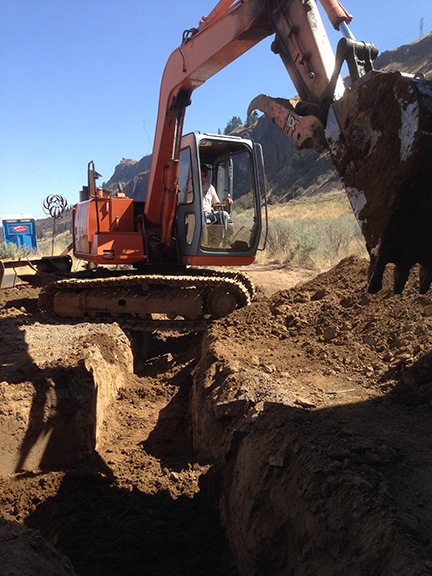
Jeff covered the trenches about 24 hours after he dug them.
While she was there, however, she also inspected the trench and conduit and passed it. That gave Jeff the green light to cover the trenches up. I laid the red warning tape the PUD supplied as he dumped dirt onto it. (Of course, that meant I was covered with dirt again — fortunately, I could take a shower at home that night.)
Power Restored, Prepping the RV Garage Apron
With the trenches covered, Jeff got right to work on prepping the area for my RV garage apron. This meant digging and moving earth to create a gradual slope from the building down to my driveway. He took the extra dirt and moved it in front of my garage, smoothing down the fill so I could better access the last garage bay, which is where I expect to park my truck. (My dining table is currently set up in there for the occasional dinner party.) Along the way, he created an area in front of my front deck that would be perfect for a lawn with a rock border.
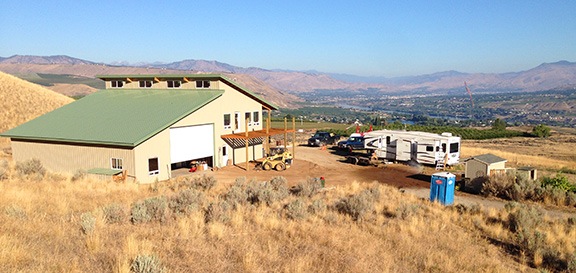
Here’s what my building site looked like on Wednesday morning. The bobcat is parked on what will someday be a small lawn for Penny. (She loves grass.)
Jeff finished up on Wednesday morning with the delivery of two loads of gravel that he spread on the garage apron area and my driveway.
He was out getting the second load when the PUD guys returned. There were six of them in three trucks. They backed one of the trucks up to the meter base I’d installed on Sunday (more on that in another post) and pushed the heavy cable from a spool through the conduit. They connected the cables to the transformer. They installed the meter. They tested some things on the panel inside. And then they left. It took less than 15 minutes. I now had power running to my building.
Before they left, however, I chatted with them about my upcoming project — to pull six wires through the 2-in. conduit I’d laid to the shed. One of them asked what I was going to use to pull the wire. When I told him I’d buy some nylon rope, he gave me a 200-foot length of the fiber strapping they use to pull wires. Apparently, they have so much of this stuff they usually just throw it away.
Jeff returned with the second load of gravel and spread it out. He was done by 11 AM. He left with his dump truck and backhoe on a trailer behind it. Later, I’d meet him at another job site and bring him back to my place to fetch his truck, smaller trailer, and bobcat.
Although the place was still a bit of a mess after all that work, it was definitely shaping up. I was now ready to start wiring my shed and building and install the plumbing. But more important than that, I was ready to get the concrete laid so I could finally get my helicopter inside.






